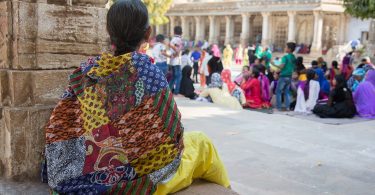For Britain’s favourite dog show, Crufts, the past week has been a controversial one. Following the death of Jagger (Thendara Satisfaction) the Irish Setter, dog lovers have been in uproar over the revelation of the post mortem results, which confirmed beef laced with unknown poisons had been the cause of death.
A former Crufts enthusiast myself, and even attendee, this incident made me question the ethics of the show; and having looked into past shows, it seems evident that the show may be becoming an outdated fashion parade. Cheif Vet of the RSPCA (2007-2010), Mark Evans, went as far as to call the programme “a parade of mutants”.
Is Crufts cruel?
Concerns over the motive for Jagger’s death have been raised, as he was assumed to have been fed the poison while on the bench at Crufts. This event also brings into question the importance this competition has for breeders; thousands can be earned from breeding a winning dog, although the owners do not believe that the act was not committed by one of their fellow competitors.
Bad handling by owners
Dog owners have also expressed concern over the handling of the Scottish Terrier who won Best in Show. Handler Rebecca Cross has been questioned for picking up the terrier by the neck and tail, a move which has motivated almost 190,000 people to sign online petitions calling for Ms.Cross to be stripped of her Best in Show title, and for an RSPCA investigation to be launched.
Controversy
This is not the first time the Kennel Club hosted event has been the centre of suspicion. Following the 2008 BBC documentary Pedigree Dogs Exposed, the show was criticized heavily on its judging standards and breeding practises which compromise the health of purebred dogs. The following year, Crufts was dropped by the BBC, and they also lost the sponsors of the RSPCA and Dogs Trust.
Inbreeding
The documentary highlighted the hereditary defects that many pedigree dogs suffer from, as a result of the exclusivity of their breeding. Many breeders choose dogs for their aesthetic qualities, rather than for their general health and wellbeing.
For example, the King Charles Cavalier Spaniel suffers from syringomyelia; a condition where the skull is too small for the brain, and in extreme cases can cause severe seizures and pain, in which case the dog must be put to sleep.
A number of Crufts participants have included dogs with the disorder, and by breeding multiple times, they pass on the disease to the next generation of cavaliers. Crufts currently have no restrictions in place covering hereditary diseases in their competitors, allowing the owners to breed these dogs.
Fewer rescue dogs homed
In 2011 PETA held a “Boycott breeders. Adopt.” campaign in which they put up a number of posters in Birmingham at the site of Crufts, urging dog lovers to save one of the thousands of stray and abandoned dogs that are found in the UK each year. The slogan for the campaign posters read “Boycott Breeders or the Mutt Gets It. Don’t Kill Shelter Dogs’ Chances. Adopt. Never Buy”.
Stolen dogs
The amount of money to be earned from breeding pedigree dogs, particularly Crufts winners is in the thousands; putting pressure on owners to breed and sell as many puppies as possible. This enviable amount of money can put dogs at risk from being stolen, as we saw in 2014.
Valenchino Chihuahua Xena was named Best Puppy in Breed at Crufts 2014; following her win, she and four other Chihuhuas, all pedigree, were stolen from their home in Bridlington. Collectively, the toy dogs were worth £32,000, Xena alone being worth £20,000. The robbery was no doubt financially motivated, which leads us to question the safety of these animals.
Pedigree Dogs Exposed claimed Crufts was the “greatest animal welfare scandal of our time”. What are your opinions? Is Crufts a glamorized canine fashion parade, or does it set the standards for all dogs? Share your comments below!








